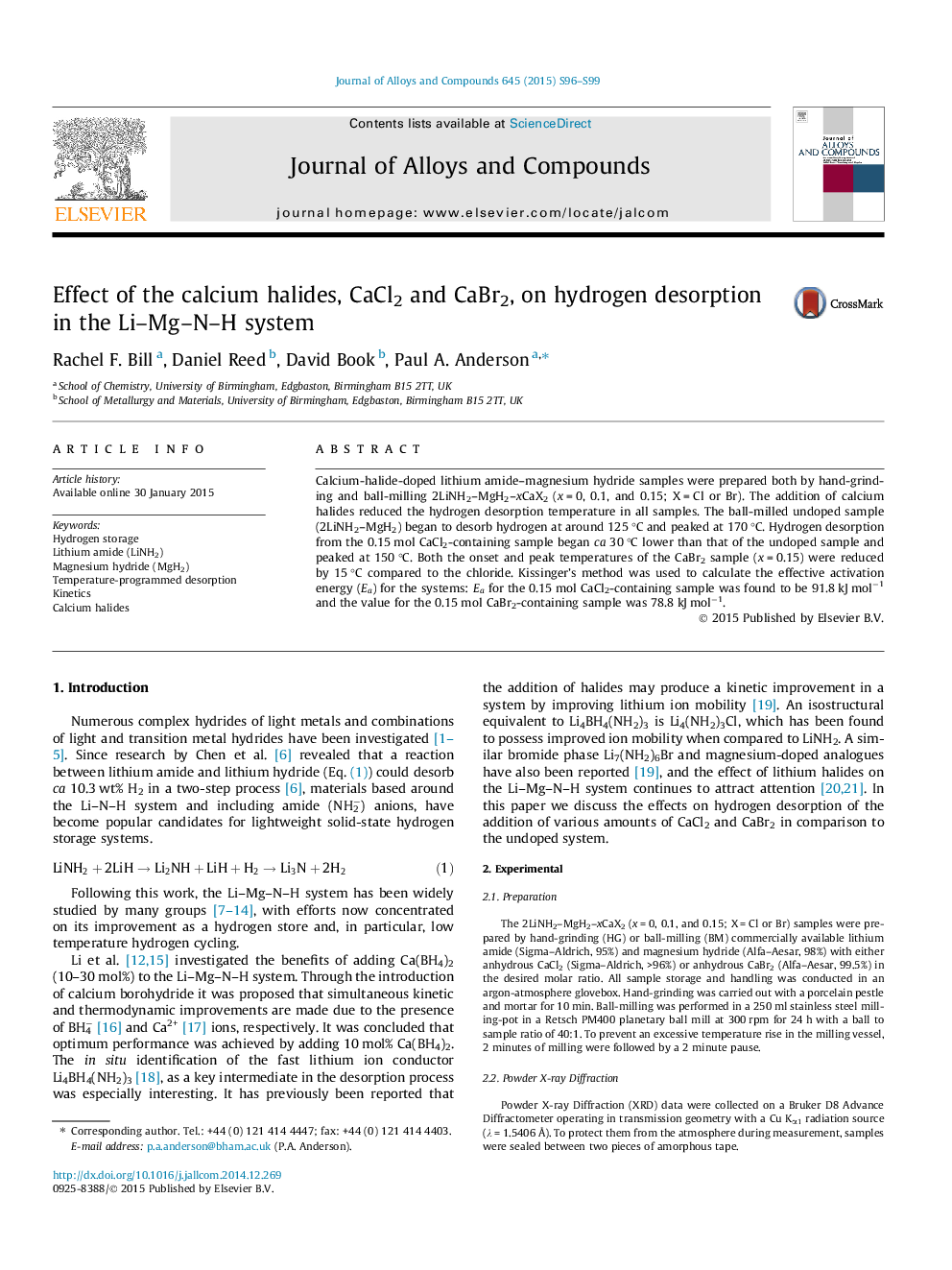| Article ID | Journal | Published Year | Pages | File Type |
|---|---|---|---|---|
| 1608723 | Journal of Alloys and Compounds | 2015 | 4 Pages |
•H2 desorption from 2LiNH2–MgH2–xCaX2 (x = 0, 0.1, 0.15; X = Cl, Br) samples studied.•Addition of calcium halides reduced the desorption temperature in all samples.•Peak H2 release was around 150 °C lower in ball-milled than in hand-ground samples.•The 2LiNH2–MgH2–0.15CaBr2 sample showed the lowest peak desorption temperature.•CaBr2 reduced the activation energy to 78.8 kJ mol−1, 24% less than the undoped sample.
Calcium-halide-doped lithium amide–magnesium hydride samples were prepared both by hand-grinding and ball-milling 2LiNH2–MgH2–xCaX2 (x = 0, 0.1, and 0.15; X = Cl or Br). The addition of calcium halides reduced the hydrogen desorption temperature in all samples. The ball-milled undoped sample (2LiNH2–MgH2) began to desorb hydrogen at around 125 °C and peaked at 170 °C. Hydrogen desorption from the 0.15 mol CaCl2-containing sample began ca 30 °C lower than that of the undoped sample and peaked at 150 °C. Both the onset and peak temperatures of the CaBr2 sample (x = 0.15) were reduced by 15 °C compared to the chloride. Kissinger’s method was used to calculate the effective activation energy (Ea) for the systems: Ea for the 0.15 mol CaCl2-containing sample was found to be 91.8 kJ mol−1 and the value for the 0.15 mol CaBr2-containing sample was 78.8 kJ mol−1.
